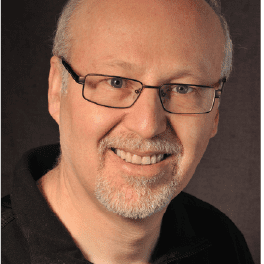April 2014 Hearing Review
It is almost as if music has something in common with everything—psychology, physiology, acoustics, engineering, most areas of the arts, and now the lowly spondee.
Recently, I have been reading a book on combinatorial mathematics (don’t panic, the book is written for the lay audience and not meant to conjure up memories of doing math problem sets with 4 minutes to go before they are due, and spilled coffee everywhere… Ah, memories of my distant undergraduate past). On page 8 of the book, I ran across the word “spondee.”
I quickly flipped back to the front cover to make sure that I was not reading the Handbook of Clinical Audiology by Jack Katz (6th edition), and indeed I was reading a math book.
The spondee has an interesting history spanning back to the time of the ancient Greeks (almost as old as one of my audiometers). Actually, its roots even go back to the I Ching (Book of Change) of ancient China around 1100 BC. In this culture, and later the Indian culture, there was a fascination with sentence and speech prosody. In Indian culture, certain syllables uttered during Vedic chants in Sanskrit had a certain rhythm, and these involved long syllables and short syllables in a well-defined pattern.
The Vedic chants had three syllable “meters,” which were based on short and long syllables. In modern terminology, we would refer to this analysis as a binary “0” and “1” combination (which is why all of this was in a math book). If a spondee is made up of two long syllables, then a math nerd would write it as (1,1). Another two syllable word that is made up of a short syllable followed by a long syllable would be written as (0,1).
So, What Does This Have to Do with Audiology and Music?
This is where the Greeks came in. In about the year 375 AD, some Greek prosodists were studying their language and came out with certain long and short syllable combinations, which occurred during speech, writing, and, most importantly, their song of war (???????) or their song of peace. They called two short syllables in a row, a pyrrhic, and two long syllables in a row, a spondee.
Well, it wasn’t long before the Romans borrowed the Greek invention, and through the Latin language, eventually it came in to the English language. Here is a partial list of terms of words (and, as we will see, music), with short syllables denoted as a 0 and a long syllable denoted as a 1.
0 arsis
1 thesis
0,0 pyrrhic
0,1 iambus
1,0 trochee (choree)
1,1 spondee
0,0,0 tribrach
1,1,1 molosus
I suppose that when the field of Audiology was still in its infancy, we could have used pyrrhics for SRT testing instead of spondees, but clearly most audiology students would not have been able to spell it. I am not convinced that spondees would have been the best. An advantage of a spondee (or a pyrrhic, tribrach, or molosus) is that the peak of the nuclei of the syllables would be of similar sound levels. But is this really a necessary requirement? I can see the advantage for speech awareness thresholds (SATs), but I don’t see why speech reception thresholds (SRTs) should have equally stressed syllables—so few words in everyday speech have equally stressed syllables.
So where do we see spondees in music? As far back as 325 BC (I was only in elementary school back then), the book Elements of Rhythm used these terms to apply to certain combinations of musical notes. A spondee form (Spondeus) was a combination of notes starting from pairs of whole notes, and gradually increasing in playing speed over the bars to eighth notes. A pyrrhic from Pyrrichius was a combination of notes starting from pairs of half notes, and gradually increasing in playing speed over the bars to sixteenth notes. This terminology was carried forward until after the Renaissance and was noted in books about rhythm and prosody until about 1650. In poetry, one can still see the use of the spondee in many forms.
You unfortunate souls who took a second major or a minor in English Lit—or whose parents force-fed you the classics—are also familiar with iambic pentameter: the use of five iambs (five sets of unstressed syllables followed by stressed syllables that sound a bit like a heartbeat or “de/DUM de/DUM de/DUM de/DUM de/DUM”).
And here is one more example of the tri-linguistic roots of Audiology: “Aud” is Latin, “ology” is Greek, and so is spondee. And all together, they are English.
Marshall Chasin, AuD, is an audiologist and director of research at the Musicians’ Clinics of Canada, Toronto. He has authored five books, including Hearing Loss in Musicians, The CIC Handbook, and Noise Control—A Primer, and serves on the editorial advisory board of HR. Dr Chasin has guest-edited two special editions of HR on music and hearing loss (March 2006 and February 2009), the latter with Larry Revit, as well as a special edition on hearing conservation (March 2008) with Lee Hager. Correspondence can be addressed to Dr Chasin at: [email protected].
Original citation for this article: Chasin, M. What do spondees, math, literature, and music have in common? Hearing Review. 2014;21(4): 14.






